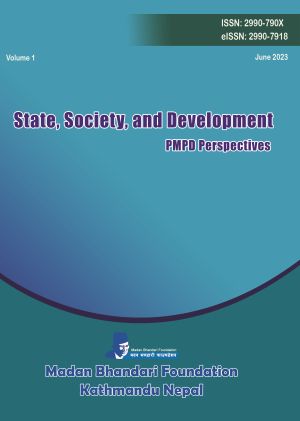Assessment of Government Policies, Farm Subsidies, and Agriculture Growth
DOI:
https://doi.org/10.3126/ssd.v1i1.58475Keywords:
AGDP, Mega investment, PMPD, Pro-farmer, Subsidy-use and abuse, Value chainsAbstract
Political ideology serves as the nexus that intertwines various aspects of farming policy formulation, subsidy distribution, foreign grants, and the growth rate of the agricultural sector. This article takes a comprehensive look at the intricate relationship between People’s Multiparty Democracy (PMPD) and the development of farmer-centric policy formulation, the different types of farm subsidies, and their allocation. This examination is conducted by evaluating the various categories of agricultural funding projects and their outcomes, as well as analyzing the performance of the agricultural gross domestic product (AGDP). The descriptive findings of this study illuminate the direct influence of PMPD in shaping pro-farmer policy formulations. Farmers have been benefiting from moderate-level input subsidies designed to facilitate the acquisition of capital assets for the promotion of agricultural technology. These subsidies are sourced from both regular government funds and donor-supported initiatives that have been executed over varying periods. The average subsidy rate remains below 50%, contingent upon its intended purpose. Despite the positive political support, the AGDP has consistently hovered around the 3% mark throughout different development plans. It’s worth noting that not only PMPD but also other political paradigms such as the Panchayat system or multi-party democracy have significantly propelled economic growth. This underscores the need for renewed endeavors to leverage farmer’s equity funds, the government’s routine budget, loans, and grant funds. This study recommends the establishment of a collaborative platform involving farmers, the government, financial institutions, and donors, to successfully execute a growth-oriented business plan. Additionally, the study strongly advocates for three major investments: the establishment of fertilizer manufacturing facilities, hybrid seed production projects, and the creation of a resource center. These investments are crucial for the enhancement of key agricultural value chains.
Downloads
Downloads
Published
How to Cite
Issue
Section
License
Once published, an article in this Journal is not permitted to publish in other journals or similar publications without the permission of the Foundation. Contents and perspectives presented in the articles in the journal are solely of the authors.




